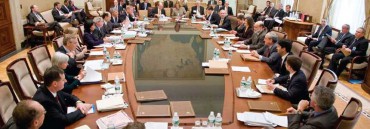DEFINITION of Federal Open Market Committee FOMC
Federal Open Market Committee FOMC, is the branch of the Federal Reserve bank that is in charge of short and long-term monetary policy decisions.
WHAT IT IS IN ESSENCE
The FOMC is best known for its decisions regarding the US base interest rate. This is decided upon eight times a year in one of the most important meetings on the economic calendar. During the last recession, the FOMC was also responsible for the United States’ quantitative easing program.
There are 12 members of the FOMC, seven of which are from the Board of Governors and are appointed by the President of the United States. The others are presidents of the Federal Reserve System’s regional central banks and rotate on a yearly basis.
By regulating interest rates and money supply, the FOMC has a huge part to play in the state of US markets.
The 12-member committee that sets US monetary policy. The FOMC holds meetings every six weeks at which it decides whether to change either of the two key interest rates. The Fed funds target, and the discount rate. The statement released after the meeting is carefully monitored by the markets for signals on the Fed bias and any forward-looking views on the economy.
An open market operation is the buying or selling of U.S. Treasury bills and bonds in the open market. The transactions take place between the Fed and banks, not the Fed and the U.S. government.
HOW TO USE
For example, there is an FOMC effort to reduce the federal funds rate. The FOMC indicates to banks that it wants to buy U.S. Treasuries. When the Federal Reserve buys the Treasuries, it pays the banks in dollars.
The banks now have extra dollars to lend out to customers. Because the supply of dollars is now higher, the banks tempt customers to borrow by reducing interest rates.
If the FOMC needs to increase the federal funds rate, it indicates that it will sell U.S. Treasuries. The banks exchange their dollars for Treasuries, and the supply of dollars in the banking system decreases. Since the supply of dollars is lower, the cost of money goes up.

